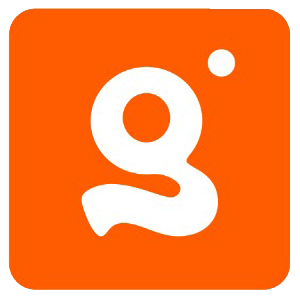This website uses cookies so that we can provide you with the best user experience possible. Cookie information is stored in your browser and performs functions such as recognising you when you return to our website and helping our team to understand which sections of the website you find most interesting and useful.

In the digital jungle of recruitment, two essential recruitment tools often get mistaken for each other: the Applicant Tracking System (ATS) and the Candidate Relationship Management (CRM) platform. Both are powerful tools, but understanding their differences is crucial for navigating the recruitment landscape with confidence. In this blog, we untangle the difference between a recruitment ATS and CRM.
The Recruitment ATS
An Applicant Tracking System (ATS) is a software application used by companies and recruiters to manage the entire recruitment process, from attracting and screening candidates to hiring and onboarding. It’s essentially a digital hub for talent acquisition, streamlining and automating many of the tasks involved in finding the right person for the job.
Imagine a high-tech magnet, attracting and organizing a universe of potential candidates. That’s the ATS in action. It’s the workhorse of recruitment, built for streamlining the applicant journey from job posting to offer letter.
Here are some key functions of a recruitment ATS:
- Candidate Cultivation: Build a talent pool of promising candidates and nurture those relationships over time.
- Job Postings: Create and publish job descriptions across various platforms, reaching a wider pool of potential candidates.
- Resume Management: Collect and organize resumes, applications, and cover letters electronically, creating a centralized database for easy access and review.
- Candidate Screening: Filter candidates based on keywords, skills, experience, and other criteria, saving time and effort by identifying the most qualified individuals.
- Interview Scheduling: Manage the interview process by scheduling appointments, sending invites, and tracking candidate progress.
- Offer Management: Send and track offer letters, streamlining the final stage of the recruitment process.
- Reporting and Analytics: Generate reports on various recruitment metrics, such as time to hire, conversion rates, and source of hire, providing valuable insights to improve future hiring efforts.
Benefits of using an ATS:
- Increased Efficiency: Automates repetitive tasks, saves time and improves overall workflow.
- Improved Candidate Experience: Creates a more organized and professional candidate experience.
- Better Quality Hires: Provides tools for better screening and selection of qualified candidates.
- Data-Driven Decisions: Track key metrics and gain valuable insights into your recruitment performance, allowing you to make informed decisions and optimize your strategies.
- Reduced Costs: Can save time and money by streamlining the recruitment process.
What recruitment ATS would you recommend?
There are various types of ATS available, catering to different needs and budgets. Some popular options highlighted in “The Best Free Applicant Tracking Systems” blog include:
- Giighire — Best for freelance recruiters and independent recruiters.
- Zoho Recruit — Best for recruitment agencies.
- OpenCATS — Best open source ATS.
- Jobsoid — Best for business owners & recruitment agencies.
- Ceipal ATS — Beest for small to mid-sized businesses.
- Workable — Best for most in-house teams and businesses.
- Recruitee — Best for HR teams.
ATS summary:
When looking at the differences between a recruitment ATS and CRM it is evident that an ATS is a powerful tool that can significantly improve the recruitment process for both freelance recruiters and candidates. By understanding its features and benefits, you can make informed decisions about which ATS is right for your needs and choose the one that best fits your budget and requirements.
The Recruitment CRM
A recruitment CRM, which stands for Candidate Relationship Management, is a software system specifically designed to help build and maintain positive relationships with passive candidates, job seekers and clients. Unlike the recruitment ATS, focused on the initial hunt, the recruitment CRM is all about building trust and fostering win-win collaborations.
Here are some key functions of a recruitment CRM:
- Contact Management: Organize, store and track candidate details, contact information, communication history, and interactions with industry influencers, potential partners, and fellow recruiters.
- Personalized Outreach: Craft and schedule personalized emails, calls, and messages tailored to each client’s needs and expectations.
- Relationship Tracking: Monitor communication interactions, track engagement levels, and identify areas for improvement.
- Reporting and Analytics: Generate reports on client satisfaction, engagement metrics, and referral sources to optimize your performance.
Benefits of using a Recruitment CRM:
- Enhanced Relationships: Build stronger relationships with candidates leading to improved engagement and loyalty.
- Increased Customer Satisfaction: Personalized outreach and proactive communication lead to happier candidates and better referrals.
- Improved Brand Reputation: Build a reputation for professionalism and trust, attracting top talent and boosting your brand.
What recruitment CRM would you recommend?
Like the ATS, various Recruitment CRMs cater to different needs and budgets. Some popular options highlighted in “Best Recruitment CRM Software” include:
- Giig Hire — Best for freelance recruiters and independent recruiters.
- Manatal — Best for most in-house teams.
- Zoho Recruit — Best for recruitment agencies.
- Recruiterflow — Best for small recruitment agencies.
- OpenCATS — Best open source CRM.
- Recruitee — Best for HR teams.
CRM summary:
A Recruitment CRM is an invaluable tool for building and nurturing relationships in the talent landscape. By understanding its features and benefits, you can leverage its power to enhance your recruitment efforts and cultivate valuable partnerships that lead to long-term success.
Packages to Expect in both a Recruitment ATS and CRM:
- Enterprise-level CRM: For large recruitment agencies with extensive client and candidate databases.
- Mid-market CRM: For mid-sized agencies or recruiting teams with moderate needs.
- Small-business CRM: For individual recruiters or startups with limited data management needs.
- Free CRM: Basic functionality for beginners or budget-conscious users.
Bonus tips:
When looking for a recruitment ATS and CRM:
- Consider integrated platforms that offer both ATS and CRM functionalities.
- Research and compare different platforms based on your specific needs and budget.
- Don’t be afraid to ask for demos and trial versions to see which platform feels right for you.
Conclusion: Recruitment ATS and CRM
In the intricate world of recruitment tools, understanding the distinction between a recruitment ATS and CRM is vital for a seamless and efficient hiring process. While each serves a unique purpose, the real magic unfolds when these tools harmonize in an all-encompassing solution. For example, Giig Hire, is an all-in-one system that effortlessly integrates both recruitment ATS and CRM functionalities, offering a comprehensive approach to recruitment and relationship management.
The Recruitment ATS within Giig Hire streamlines job postings, resume management, candidate screening, interview scheduling, and offer management, while also providing reporting and analytics. Simultaneously, the Recruitment CRM component enhances candidate and client relationship management through contact organization, personalized outreach, relationship tracking, reporting and more. This integrated approach fosters a recruitment ecosystem where recruitment and relationship cultivation seamlessly coexist.
In the evolving world of recruitment, choosing an integrated system like Giig Hire provides a strategic advantage. It not only streamlines operations but also ensures that the recruitment process is not a series of disjointed tasks but a cohesive and efficient journey from candidate attraction to lasting relationships.
